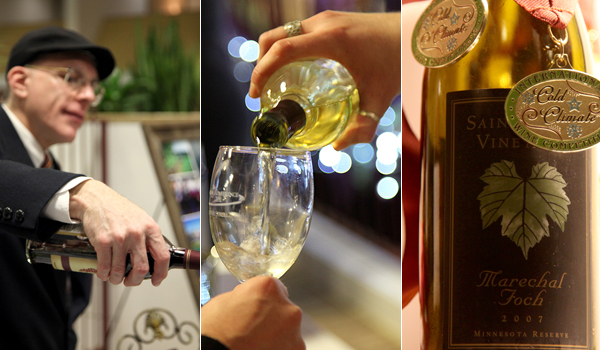
When asked to participate in a panel addressing members of the Minnesota Grape Growers Association, this writer couldn’t have been more excited. Not only did it present a chance to give opinions straight to the stewards of a local agro-industry, but it was also a chance to get a better bearing on the state of local wines. There are certainly quality wines being made in this state, but they really have yet to catch on with most wine drinkers. The goal for the evening was to figure out why this is, while trying to gain a sense of how local wines will evolve in the coming years.
The focus of our panel discussion concerned the marketing of local wines — the central issue being why locavores aren’t becoming locapours. Joining this writer on the panel was Lee Zukor, of Simple Good And Tasty, and Dan Schwarz, of Lift Bridge Brewery. The entire panel suggested greater synergy with restaurants, especially ones making their name by using local produce. “Restaurateurs, as business people, they understand that being able to offer something that’s new to their customers is a pretty valuable thing,” said Zukor. “They’re already used to people coming in with all kinds of produce, and being given ideas on how to use it. The goal is getting them to think of wine as an agricultural product and to have food pairing ideas ready.”
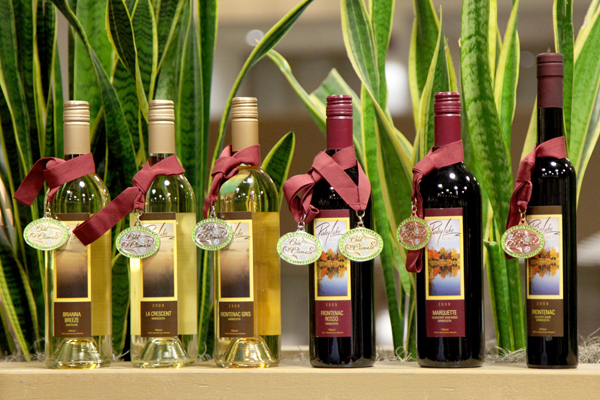
The session touched on the advantage cold climate wines have in a restaurant setting. Wines with higher natural acidity (which cold climate grapes tend to be) are food-friendlier wines. Local wineries are already keen on this idea. Steve Zeller at Parley Lake Winery makes a Frontenac that he admits is too acidic to enjoy on its own, because it’s specifically designed to be a complement to food. “It’s not just about making a local product,” says Zeller. “We’re passionate about what we do. We’re serious about making great quality wines; we’re not just trying to put sweet wine on the table. You have to try it, pair it with food correctly. If you do, you’ll be coming back for our wines all over the state.”
The panel also suggested that wineries capitalize on their unique purpose. “The ability to explain where this wine comes from, why it matters, who created it, where the grapes came from,” explained Zukor, “all those things fill out a story that’s really interesting to the chefs and restaurant owners. It’s not just about the product, it’s about the story that connects people to the product.” One way to do that is to make a greater effort to get people out to the wineries — especially while the law is on their side. “Wineries have the edge over breweries right now,” Schwarz said. “To be able to get people to your place and see how you make your product, but then sell them a glass or a bottle of wine to go, both are illegal in Minnesota for breweries. They can sit and soak up the experience that much more. Even if you can’t afford to staff a tasting room all the time, set some hours and use social media to get the word out.”
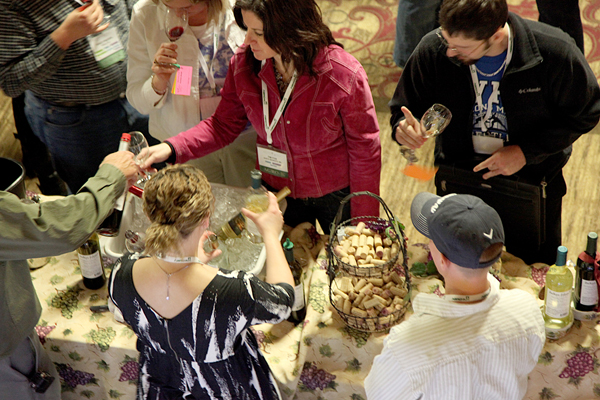
This raises another question — how are wineries getting the word out? They are certainly not publicized like the Minneapolis microbrews. Picking up the slack is Jason Johnson, founder of the Minnesota Wine Club. He packages six Minnesota wines, complete with a newsletter, information on the wines and wineries, coupons and other educational materials, in a quarterly shipment for $109 including tax and shipping. “Only a few of the wineries do a really good job of marketing,” says Johnson. “We’re able to get these wines out to every corner of the state, to places where people wouldn’t be able to try them. The wineries can use our website, for news and events that they have going on, and we’ll talk about it on our Facebook and Twitter. We want the wineries to look at us as another marketing arm for them.” Johnson, too, is concerned with the overall quality of Minnesota wines. “In the past 10 years, they’ve come a long way,” he says. “With all the new wineries opening up, and with more competition, a lot of the junk wines are falling off.”
Johnson’s business model is significant for Minnesota because he is taking a crucial step that the industry isn’t: letting consumers know which are its top products. There’s currently no vintner’s quality alliance or other official avenue that gives any indication that a wine is representative of the quality one should expect. Certainly this is, in part, a function of the industry being only about 20 years old, but again, how do people know these are quality wines? Or are they even quality to begin with? Well, when 24 of the area’s top producers are pouring their wares in one place, it’s a little easier to figure out.
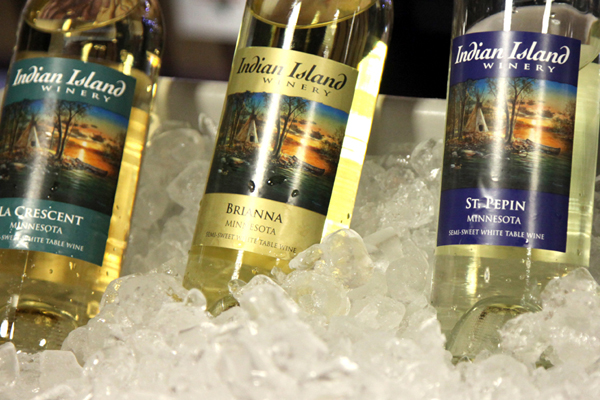
From the vast array of Minnesota wines being poured at the Midwest Wine Stroll that evening, the whites certainly stood out. It seemed that every winery had a great example of a La Crescent, Brianna, St. Pepin, or Edelweiss in a range of styles that would please most wine drinkers. Though it became evident to this writer that the red wines were not on par with the quality of the whites, there were certainly successful reds on display. An informal survey of those at the conference named Saint Croix Vineyards and Indian Island Winery as two with top notch reds (this was confirmed during the tastings). Many reds, however, exhibited strange aromas, unbalanced bodies, or odd aftertastes.
This quality gap seemed to plague even the most respected producers – it begs for explanation. “White winemaking is following a recipe, while red winemaking is more of an art,” explains U of M Enologist Katie Cook. “Because these varieties are so new, it is difficult to give a ‘best practice’ to winemakers. We only have one shot at it every year, and because each year brings different challenges, it will take many vintages before we start getting it right consistently.” She cites overly judicious oak and difficulty determining harvest times among the myriad of winemaking decisions that make red wines such a challenge. She also pointed out that the extra natural acids that make the whites so food friendly are a hidden obstacle to successful reds. Cold-climate reds require a significant amount of deacidification to make a balanced wine. This can’t always be accomplished by the secondary (malolactic) fermentation, which by itself can result in off-flavors for wines with a high malic acid concentration.
In this writer’s opinion, the best “reds” in the evening’s tasting were the ones that used red grapes in adulterating styles, like Garvin Heights Frontenac Port and Morgan Creek’s “Nova,” a semi-sweet Frontenac Rosé. In these examples, while supplemented with brandy or residual sugar, the Frontenac flavor was still front and center. The flavors are there, the vintners just need a few more vintages to get it right — and based on the quality of the whites, it looks as if they probably will.
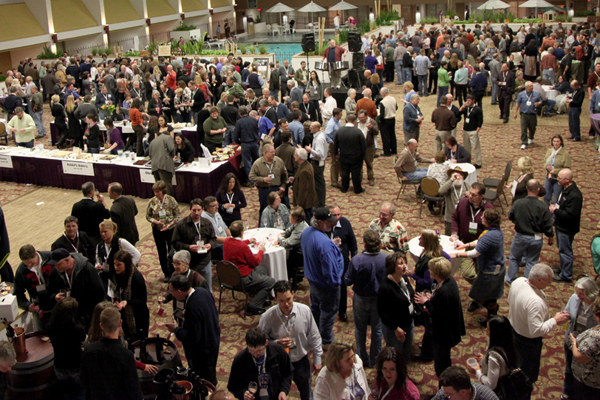

Hi John,
Nice write-up on the conference and the challenges of successfully making wines from cold-climate wine grapes. I was happy to see you in attendance at the conference, as a presenter, and here as an advocate. Frankly, there are far too few Midwest wine writers and I welcome your voice.
In my humble opinion, as a Midwest wine maker and writer, the wines we craft from these cold hardy cultivars are, like many have suggested, very food friendly. One of the challenges we, as an industry must accept, is that our red wine grapes are unique and reflect our terroir, insofar as they are highly acidic – think classical Italian reds. Very food friendly. We are tempted to compare new wine grapes, such as Marquette, to traditional Vinifera (traditional European wines) – they aren’t and I think it is poor practice to make this comparison.
One of my very favorite wines from the wine stroll was a Nouveaux (made from Marechal Foch and St. Croix) using a process called “carbonic maceration”. Both wine grapes alone, made using traditional vinification processes tend to be gamy, heavy herbaceous, and sometimes funky. This wine was delicious and fruity.
Our wines are acidic by nature. And white wines, with a some residual sugar, tend to make very delicious wines. Think German whites, such as Riesling. Bracing acidity balanced by just the right about of sugar. I’ve tasted some absolutely amazing white wines from wineries in Minnesota, Iowa, Missouri (just to name a few). One noted wine author suggested the very best dessert wines come from the Midwest (compared to the likes of CA). I agree.
The Minnesota Grape Growers Association and the University of Minnesota are providing the Midwest with both best practices and the best cultivars to make the best wines!
Cheers to my wine industry colleagues and local wine supporters!
Best Regards,
Brad Johnson, editor
Winedustry: Wine industry news for the “other” grapes.
Thanks for covering the event! I agree with Brad, Cannon River Winery’s Nouveau was a standout among the reds. Cheers!
John,
Thank you so much for participating on the Local Foods/Local Wines panel! Our attendees and I appreciate your insight and great suggestions. It wad very nice to meet you and please stay in touch!